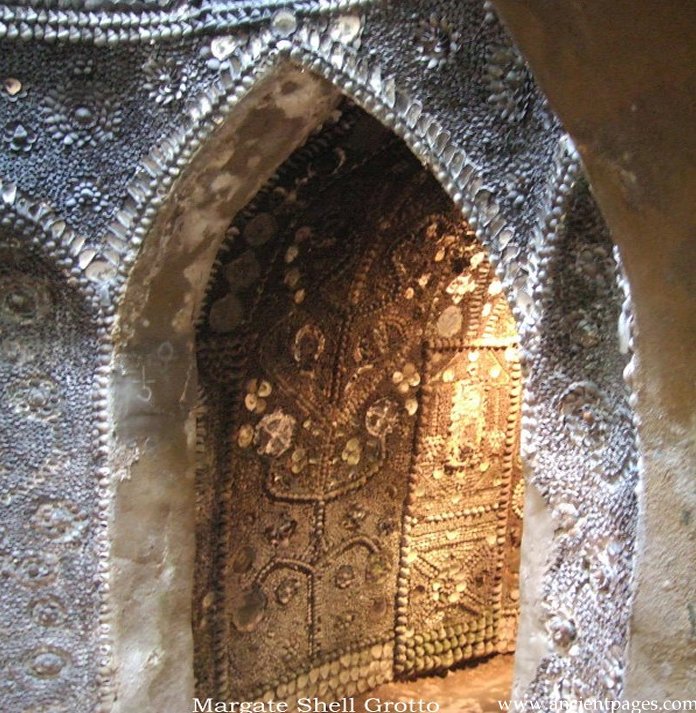Amazing Margate Shell Grotto – Kent’s Greatest Mystery
Ellen Lloyd - AncientPages.com - Strange and marvelous sights await you when you enter the Margate Shell Grotto.
The walls and roofs covered in mystical designs laid out in mosaics made entirely of seashells are truly beautiful. Some of the motifs even resemble ancient Indian and Egyptian designs. The wonderful Margate Shell Grotto is located in Kent, UK.
It was accidentally discovered in 1835 James Newlove's young son Joshua was lowered through the narrow hole on a length of rope to retrieve a tool. When Joshua emerged he described incredible tunnels all covered with shells. Shortly after the discovery, the land above the site was purchased by Newlove. He opened the grotto to the public in 1837 after installing a horizontal entrance into the altar chamber and lighting the tunnels with naked gas flame lighting.
Who used the subterranean passages in ancient times?
Why were the walls and roofs decorated with millions of shells?
The 2,000 square feet of mosaic consists of as many as 4.6 million shells! Ever since its discovery, this intriguing underground structure has been the subject of much speculation and debate as to its origins.
Some researchers have suggested it was an ancient pagan temple.
The analysis of the symbolic meaning of the designs has lead scientists to believe that it could have been a prehistoric Roman construction, an ancient Phoenician temple, or the work of a secret society.
There are also some scholars who think the tunnels and chambers are connected to the Knights Templar and Freemasonry.
According to the Kent Archaeological Society Mick Twyman of the Margate Historical Society who published the results of several years of study and "believes the Grotto may have been associated with the Knights Templar with a construction date of mid 12th century. His conclusions are based on the careful measuring of angles within the Grotto and the observance of the position of projected sunlight onto the inside of the dome.
He has also identified design features that he suggests point to the Altar Chamber being an early temple for Masonic rituals. Almost all of the theories of the Grotto's origins are based on there being 'hidden wisdom' in the layouts of the shells. "
Perhaps the most mysterious part of the Margate Shell Grotto is its entrance. It was originally "four feet high with a similar width and blocked at the end. The passage allegedly continued northwards beyond the modern entrance stairs and came to the surface via some steps. That portion of the tunnel is said to be backfilled and lies beneath an adjacent property."
According to R. F. LeGear (MAAIS, AIFA) from Kent Archeological Society, "the passage is now of similar dimensions to the rest of the Grotto having been enlarged by Newlove when his altar chamber entrance was closed after construction of extra school rooms above. This work was completed by a local builder/plasterer Stephan Wales. It is puzzling that the opening to the entrance passage from the rotunda has a full-height archway that was obviously constructed at the time of the decoration.
If the passage really was only four feet high when the Grotto was discovered in 1835 why was the opening at full height?"
When you have walked through the new entrance a narrow curving passageway, you will be taken to the magnificent chamber covered in literally thousands of shells, in complex patterns.
This chamber is narrowed to a passage by a great circular pillar in its center. At the further end of this chamber, a passage leads off to the Dome, with arches opening out in three directions. The dome is a circular shaft extending to the surface which is 4.00m above floor level. At the surface, the shaft has been capped with a concrete rendered brick or flint dome which has a small aperture open to the sky. Were these places used as ancient astronomical observatories?
As the matter of fact, the Dome is said to function as a solar clock/calendar. A further S-shaped passageway leads to a rectangular room, which had its vaulted ceiling and part of its wall destroyed in the World Wars.
For many years there have been a lot of speculations and attempts to unravel the mystery of the Margate Shell Grotto. In 1804, The Times described this enigmatic place as follows:
"There is at Margate, although known to only a very few persons, a curious grotto, concerning the construction and real date of which nothing is certainly known. It is on the premises and behind the house of Mr. Oldfield and has a door which opens towards the sea, behind which is another, glazed with painted glass, on which are various well-executed emblematical representations, with two armorial bearings, and an inscription with the name of a Dutch lady and the date of 1612. Whether this is the date of its erection or not can precisely be told.
The place is quadrangular, with a sort of wagon roof, and most plentifully adorned with valuable shells of various kinds and sizes. It is floored in compartments with smooth stones and the spaces in between filled with pebbles.
In one corner is an antique earthenware vessel, seemingly intended for the holding of Holy Water, a conjecture which receives confirmation on the east side which appears to have been formed to represent an altarpiece.
There is, therefore, little or no doubt that this apartment was originally calculated for the most austere and sublime exercise of the Catholic Church, admitting no light but through the small stained window, which, however, when opened, immediately discloses a view of the ocean. It is only within a short time that it has been discovered. Nobody knows, as far back as is recollected what the place contained: but it is said that it was the burial place of some old person who had once kept the house, on the site of which a seminary is now erected."
The original builders of the Margate Shell Grotto are unknown. The purpose of the grotto is also a great puzzle.
Perhaps it was really constructed in the 1700s by one of the many Eastern-influenced secret societies of English gentlemen, as some have suggested. Maybe it was a sacred place used by the Knights Templar. There are many mysterious emblems in the grotto that have not been identified.
The Margate Shell Grotto is surrounded by beauty and its shell-designed patterns can be based on sacred ancient wisdom. The grotto remains Kent's greatest mystery.
Written by - Ellen Lloyd – AncientPages.com
Copyright © AncientPages.com All rights reserved. This material may not be published, broadcast, rewritten or redistributed in whole or part without the express written permission of AncientPages.com
More From Ancient Pages
-
 Never-Before-Seen Ancient Texts Hidden In Saint Catherine’s Monastery In Sinai Are Now Available Online
Archaeology | Dec 21, 2017
Never-Before-Seen Ancient Texts Hidden In Saint Catherine’s Monastery In Sinai Are Now Available Online
Archaeology | Dec 21, 2017 -
 Teens Make Incredible Discovery In An Ancient Florida Cave
Featured Stories | Mar 15, 2024
Teens Make Incredible Discovery In An Ancient Florida Cave
Featured Stories | Mar 15, 2024 -
 Cimmerians – Ancient People Searching For A Home
Civilizations | Feb 11, 2019
Cimmerians – Ancient People Searching For A Home
Civilizations | Feb 11, 2019 -
 New Egyptian Dinosaur Helps To Reconstruct Evolution Of Dinosaurs In Africa
Archaeology | Jan 30, 2018
New Egyptian Dinosaur Helps To Reconstruct Evolution Of Dinosaurs In Africa
Archaeology | Jan 30, 2018 -
 Full-Sized Model Of Noah’s Ark Created In The U.S. To Show People The Evolution Theory Is False
News | Oct 20, 2022
Full-Sized Model Of Noah’s Ark Created In The U.S. To Show People The Evolution Theory Is False
News | Oct 20, 2022 -
 Ancient History Of The Christmas Tree And Its Pagan Roots – How The ‘Forbidden’ Tree Survived Against All Odds
Ancient Traditions And Customs | Dec 11, 2020
Ancient History Of The Christmas Tree And Its Pagan Roots – How The ‘Forbidden’ Tree Survived Against All Odds
Ancient Traditions And Customs | Dec 11, 2020 -
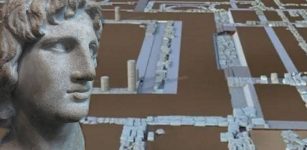 Visit The Palace Where Alexander The Great Was Born In Pella
Archaeology | Oct 21, 2020
Visit The Palace Where Alexander The Great Was Born In Pella
Archaeology | Oct 21, 2020 -
 The First Conservationists May Have Been Early Pacific Islanders Who Started The Practice 3,000 Years Ago
Archaeology | Sep 29, 2021
The First Conservationists May Have Been Early Pacific Islanders Who Started The Practice 3,000 Years Ago
Archaeology | Sep 29, 2021 -
 ‘Joyeuse’ – Legendary Sword With Relics Of Saints Was A Private Treasure Of Emperor Charlemagne
Artifacts | Dec 24, 2021
‘Joyeuse’ – Legendary Sword With Relics Of Saints Was A Private Treasure Of Emperor Charlemagne
Artifacts | Dec 24, 2021 -
 Unique Codex Cospi: Pre-Columbian Manuscript Will Soon Reveal Some Of Its Secrets
News | Oct 29, 2020
Unique Codex Cospi: Pre-Columbian Manuscript Will Soon Reveal Some Of Its Secrets
News | Oct 29, 2020 -
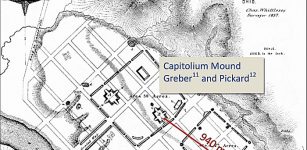 Archaeologists Refute Claims That A Comet Destroyed Hopewell Culture
Archaeology | Aug 11, 2023
Archaeologists Refute Claims That A Comet Destroyed Hopewell Culture
Archaeology | Aug 11, 2023 -
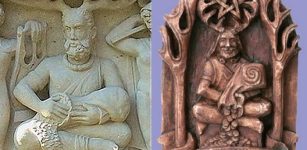 Enigmatic Cernunnos – Most Ancient, Stag-Antlered, Peaceful God Of Celtic People
Celtic Mythology | Aug 26, 2019
Enigmatic Cernunnos – Most Ancient, Stag-Antlered, Peaceful God Of Celtic People
Celtic Mythology | Aug 26, 2019 -
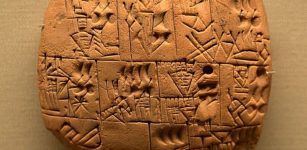 Uruk – Home To The Legendary Hero Gilgamesh
Featured Stories | Jun 6, 2021
Uruk – Home To The Legendary Hero Gilgamesh
Featured Stories | Jun 6, 2021 -
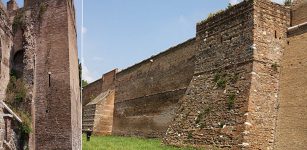 Aurelian Walls Built By Emperor Aurelian Who Tried To Lead Roman Empire Out Of The Crisis
Featured Stories | Apr 16, 2018
Aurelian Walls Built By Emperor Aurelian Who Tried To Lead Roman Empire Out Of The Crisis
Featured Stories | Apr 16, 2018 -
 Artificial Intelligence Reveals The Out Of Africa Expansion Is More Complex Than Previously Thought
Archaeology | Oct 18, 2021
Artificial Intelligence Reveals The Out Of Africa Expansion Is More Complex Than Previously Thought
Archaeology | Oct 18, 2021 -
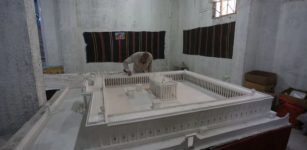 Memory Of Palmyra’s Ancient Ruins Preserved Thanks To One Man’s Dedication And Mini Models Of Lost Temples
Archaeology | Mar 24, 2021
Memory Of Palmyra’s Ancient Ruins Preserved Thanks To One Man’s Dedication And Mini Models Of Lost Temples
Archaeology | Mar 24, 2021 -
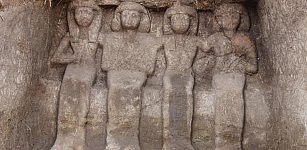 Niches With Six Figures Cut In Rock Discovered At Gebel Al-Silsila, Aswan
Archaeology | Dec 27, 2015
Niches With Six Figures Cut In Rock Discovered At Gebel Al-Silsila, Aswan
Archaeology | Dec 27, 2015 -
 ‘The Domesday Book’ Of William I The Conqueror: Detailed Register Of ‘Who Owned What’ In England
Ancient History Facts | Jan 11, 2017
‘The Domesday Book’ Of William I The Conqueror: Detailed Register Of ‘Who Owned What’ In England
Ancient History Facts | Jan 11, 2017 -
 War Between The Aesir And The Vanir Gods In Norse Mythology
Featured Stories | Apr 10, 2018
War Between The Aesir And The Vanir Gods In Norse Mythology
Featured Stories | Apr 10, 2018 -
 Before Ragnarok: Horrifying Fimbulwinter In Norse Mythology Was Based On Real Events
Featured Stories | Nov 1, 2016
Before Ragnarok: Horrifying Fimbulwinter In Norse Mythology Was Based On Real Events
Featured Stories | Nov 1, 2016

